
Notes on 740/940 Volvo Speedometers
Yazaki Gauges and Electrolytic Capacitor Leakage
A topic in Volvo forums is a problem with 740 and 940 speedometers which has been addressed by replacing electrolytic capacitors and cleaning up the damage caused by leaking electrolyte. The discussion centers around Yazaki gauges and the differences between those that fit clusters for the 1991-2 and those fitting 1993-4 940s.
Interchange is addressed in this 7/9 FAQ document: 700-900 Cluster Interchangeability
Repair of these speedometers is well described in this 7/9 FAQ document:
700-900 Speedometer Repair
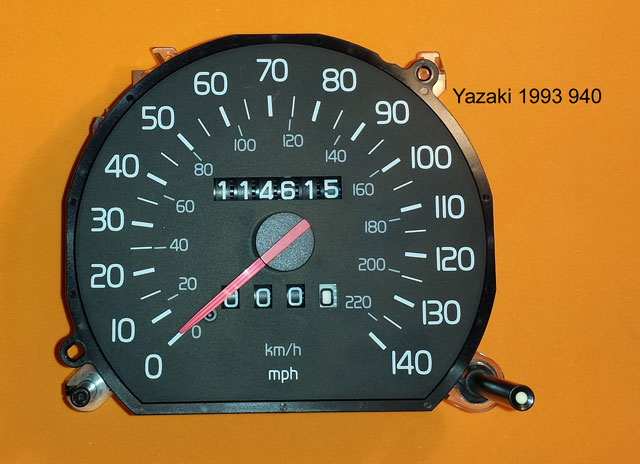 In a recent forum post, a photo of a 1993 speedometer showed what appeared to be burn damage to the printed wiring board, and it was reported to be typical of many. The question posed was whether anyone knew what caused it. As I do not own any of these cars, two 7/9 owners sent me damaged units as examples to try to learn from, and have been successful documenting the simpler 240 speedometer. I was able to repair all three units and return them. Here is what I learned from looking at these three examples.
In a recent forum post, a photo of a 1993 speedometer showed what appeared to be burn damage to the printed wiring board, and it was reported to be typical of many. The question posed was whether anyone knew what caused it. As I do not own any of these cars, two 7/9 owners sent me damaged units as examples to try to learn from, and have been successful documenting the simpler 240 speedometer. I was able to repair all three units and return them. Here is what I learned from looking at these three examples.
1991 Speedometer

Function
This shows the internal workings of the earlier gauge. The odometer is driven by a stepper motor, and the speed meter is an air core quadrature gauge. Custom ICs provide the logic to convert pulses from the reluctor (speed sensor) in the rear axle differential, reading a 48-window tone ring. The logic and gauge drivers are supported by a power supply regulator (ZD2, TR1) and a couple of external driver transistors (TR2,3) for ABS, cruise, and ECU VSS reference signals. A timer for the service reminder lamp, sensing a microswitch operating from a mileage counter cam in the odometer, is built in a custom SIP marked HIC.
Although I was not able to find any datasheet on the Panasonic (Matsushita) parts, I did find a good reference for driving air core gauges in the datasheet for OnSemi's CS4122. A scope on the coil terminals while varying input frequency confirms the Yazaki is driving the coils using PWM in quadrature.
Repair
The circuit board is 2-sided plated through hole (PTH) FR-4. Repairs I made required removing parts in order to clean the corrosive deposits from underneath them. I can imagine these repairs to be quite dicey and possibly frustrating using braid and solder bulb/extractor tools, or ineffective if the parts are not lifted from the board. One of the posts I read mentioned a symptom after repair where the needle would go no higher than 40 mph. I was able to simulate this by opening the circuit to one of the air core coils, so as noted in the FAQ, one needs to be careful about overheating the terminal pins on the speedometer gauge.
By experimenting, using cotton swabs, I looked for the best solvent action on the hard, dark colored deposits found under the components and capacitors on the top side of the circuit board. I tried 91% IPA, acetone, toluene, hexane, xylene, Caig D100L, water, and hydrogen peroxide. It is fairly subjective, but I believe the best dissolution came with the water and peroxide, followed by the alcohol. This stuff was not easy to clean. The best tool was a small acid brush trimmed to 1/8".

Some reference pics. I chose the "unsolder method" of getting the boards in hand to work on. Having access to the correct repair tools, it was much easier for me to leave the speedometer pointer on the gauge.
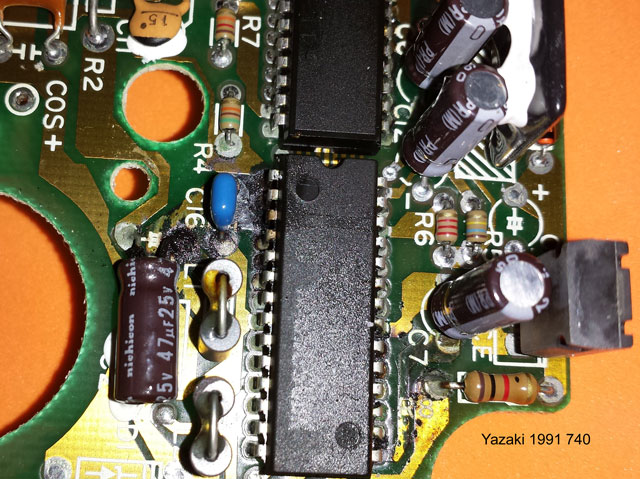
First glimpse of this and I knew I'd need to pull the IC packages.
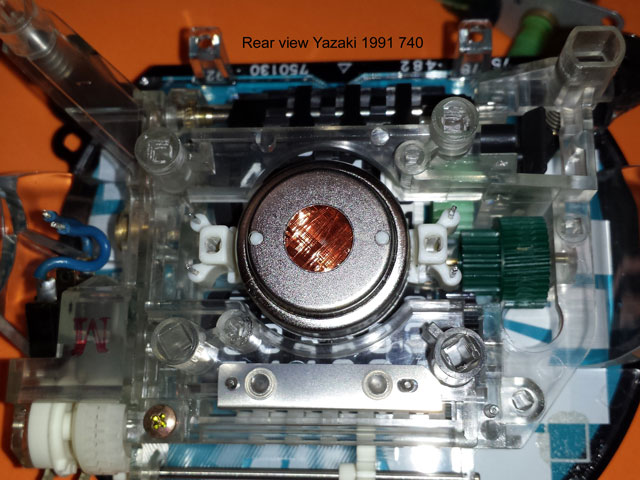
The following pics are just because I won't have the units to reference later, after repair. Click on the image for hi-res.
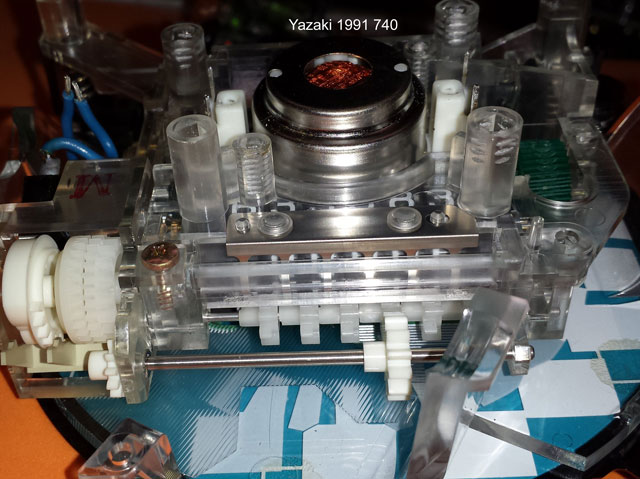
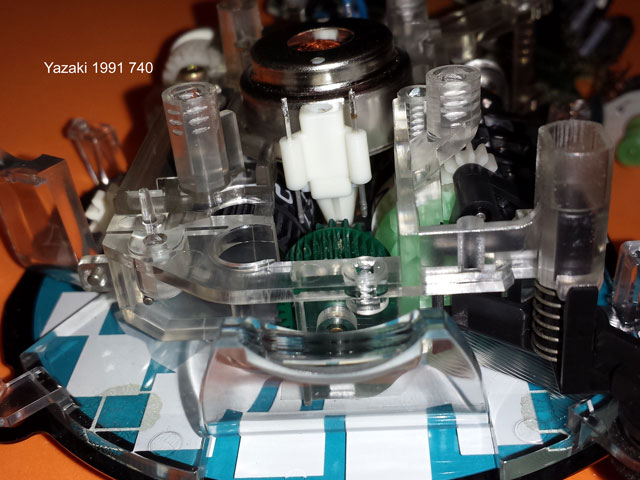
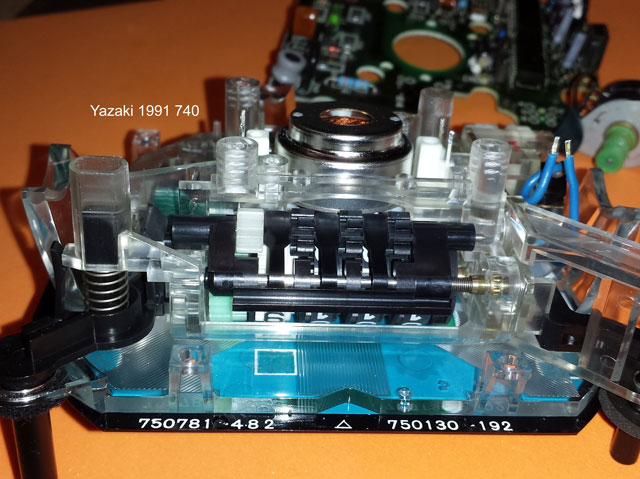
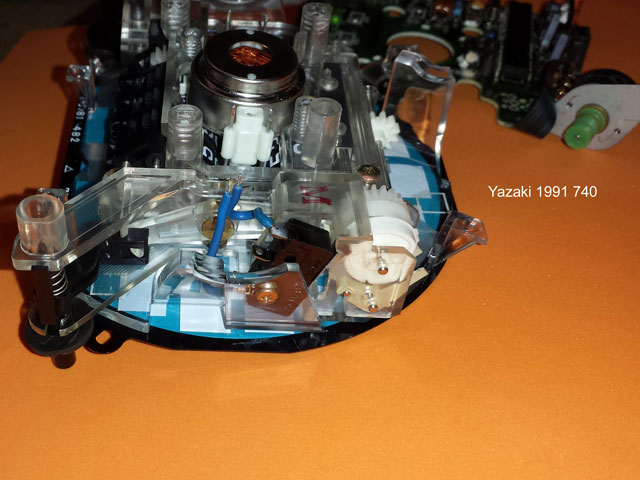



Although water (peroxide) seemed to be the best solvent, this cleanup required some careful scraping as well, and on one unit, the track under an IC was disconencted from its topside pad and plated-through hole.

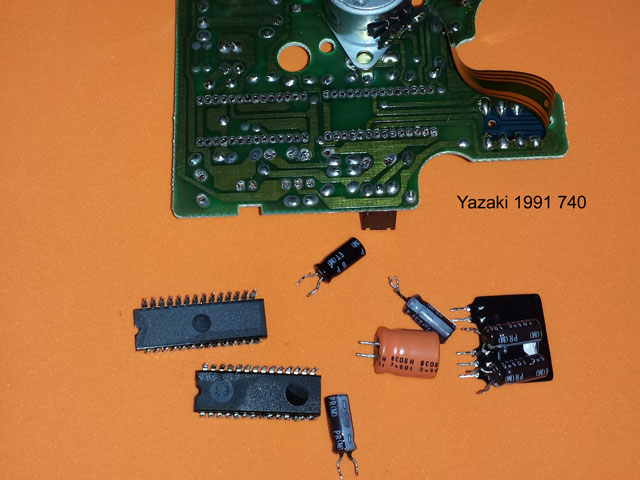
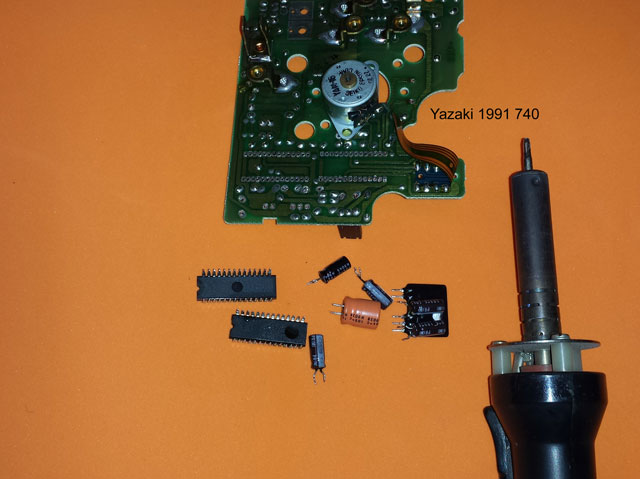
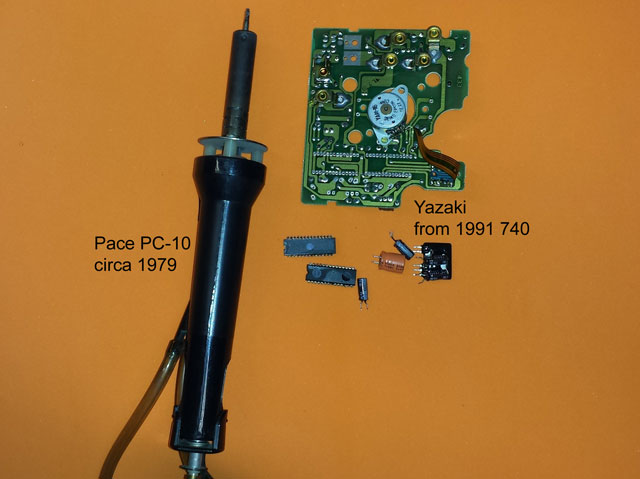
This tool allows desoldering without board damage. One hand operation, heat and vacuum.

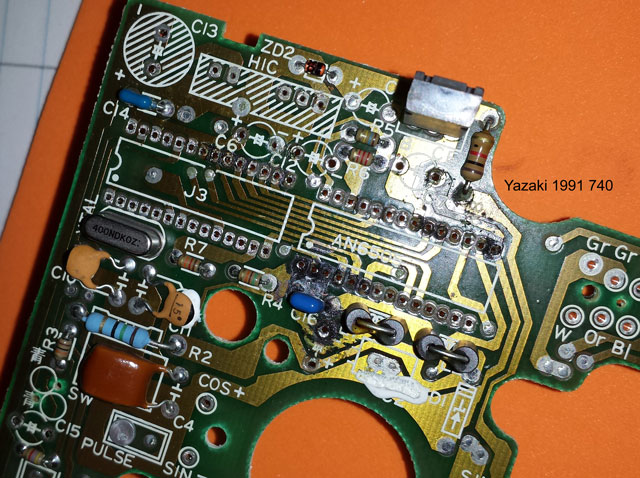

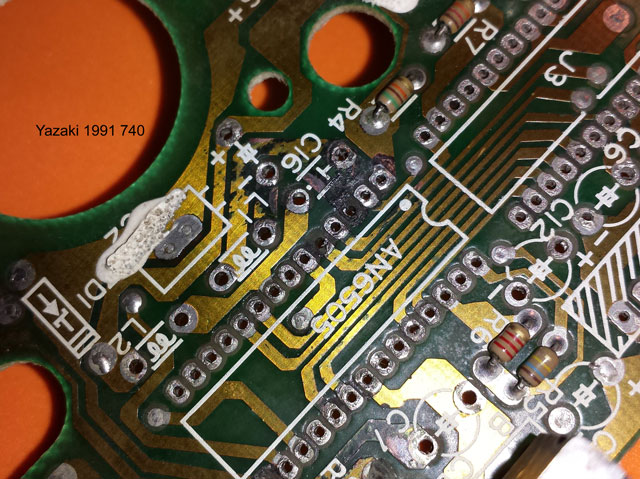
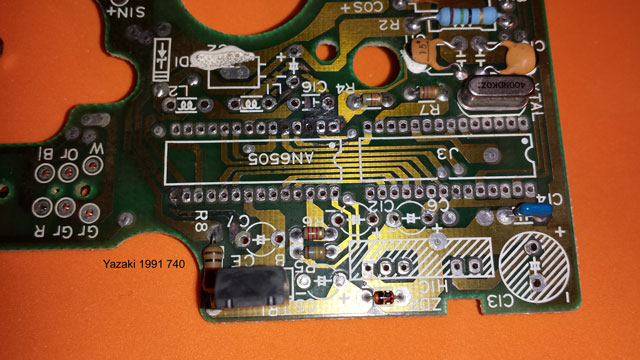
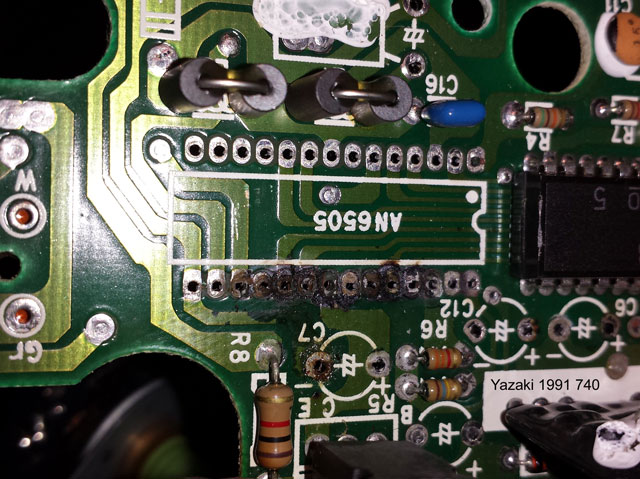
This is a second unit, showing less damage. C16 is not leaky yet. Mostly just C7.

Repaired and tested.
1993 Speedometer

Function
The later gauge provides the same function as the earlier one, but for production cost reduction, the custom ICs are now Toshiba's, the board is now a single-sided paper/phenolic (FR-1) material, with a few surface mount (SMT) components, and a single 6-position plug-in connector provides the signal and power terminals. Other than these physical differences, the gauges are the same.
Repair
The single sided board is a whole lot easier to repair without specialized tools. The example I had was previously worked on, but I could see the contamination on the solder side of the board was preventing any reflow attempted. All the parts needed to be removed so the contamination could be completely removed. Once the mess was abraided from the traces, the copper could be seen to be eroded entirely in some areas. No delamination of the copper occurred as would ordinarily be the symptom if heated by current flow, but the solder mask was peeling in places and there appeared to be migration of the contaminants between the copper and the mask as though by electrolysis on the circuit traces with normal potential difference.
The damage on the 93 unit was entirely metallic corrosion, in my opinion. An electrochemical action may have been hastened by the normal heat occuring near the light pipe illuminator and the on-board series regulator (TR1) but the burned appearance looked more to me like chemical reaction than the sort of heat that might be generated by overcurrent. Also traces which would not (could not) have any heating currents were involved. The source of the contamination is still mysterious to me, because the one capacitor nearby, a 100 microfarad electrolytic, on the top of the board, did not seem to have a physical path for so much leakage to the solder side. Assuming it was the cause, I measured the capacity and ESR and found the component not to be the typical "capacitor plague" suspect. (90 microfarad, less than 1 ohm ESR) Of course, the suspect part was replaced anyway. Once the eroded circuit paths were re-established, the gauge was again functional.
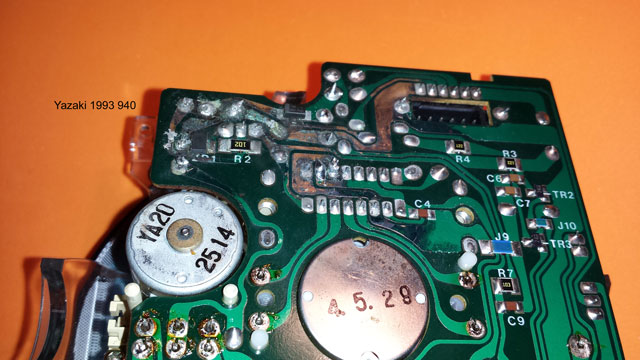
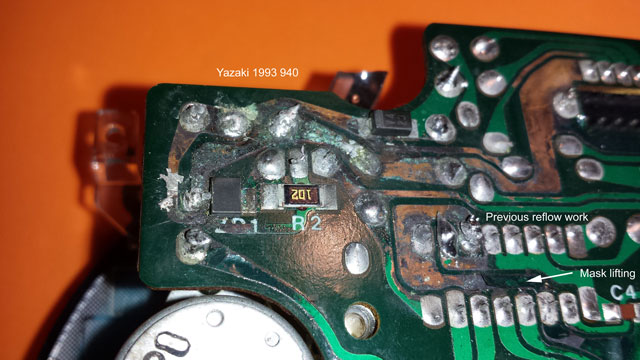
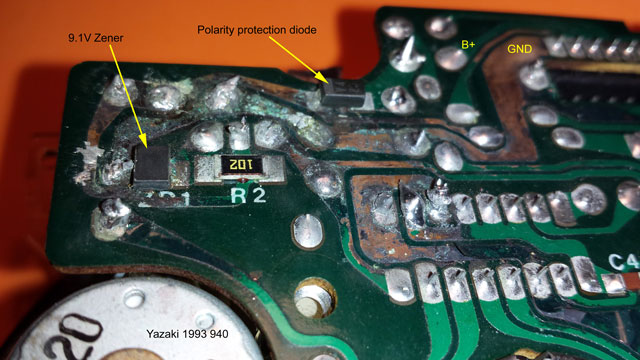
The mystery here is how so much electrolyte made it around to the solder side of the board. At the lower right is an area of solder mask (looks black) where the copper is contaminated underneath it.
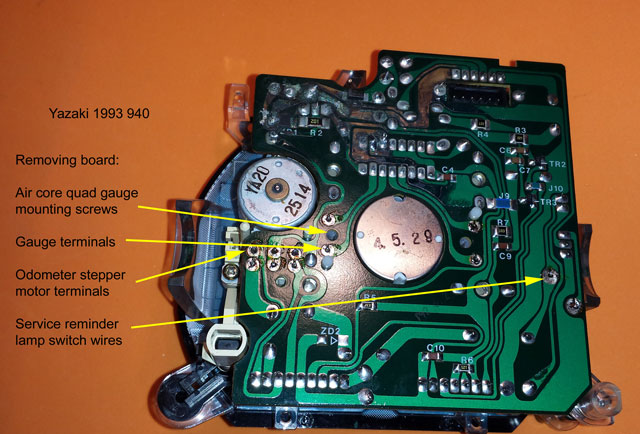
This single-sided board is easily removed with braid or bulb.
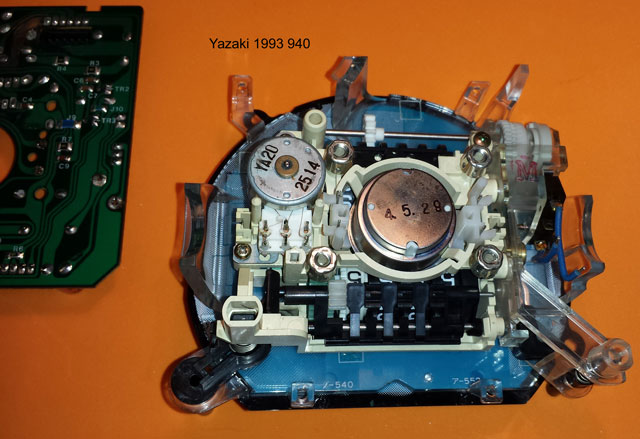
Some more reference pics from all angles.
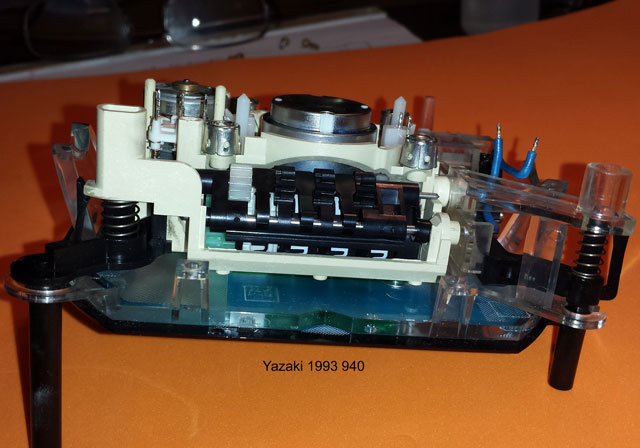
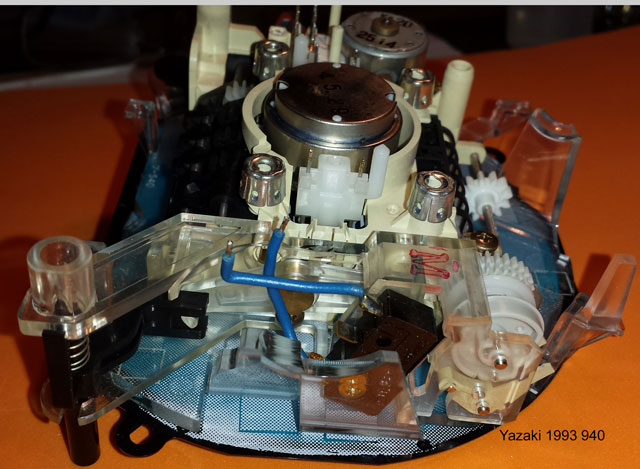
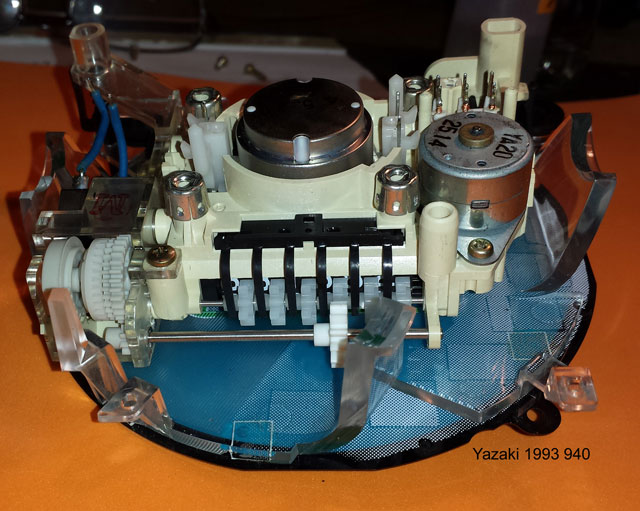
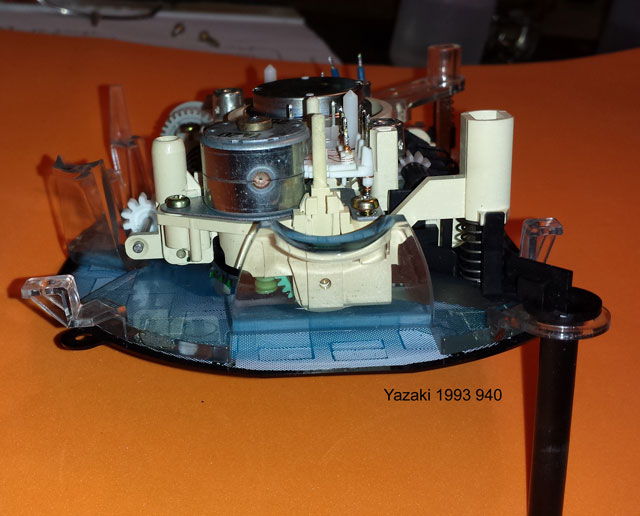

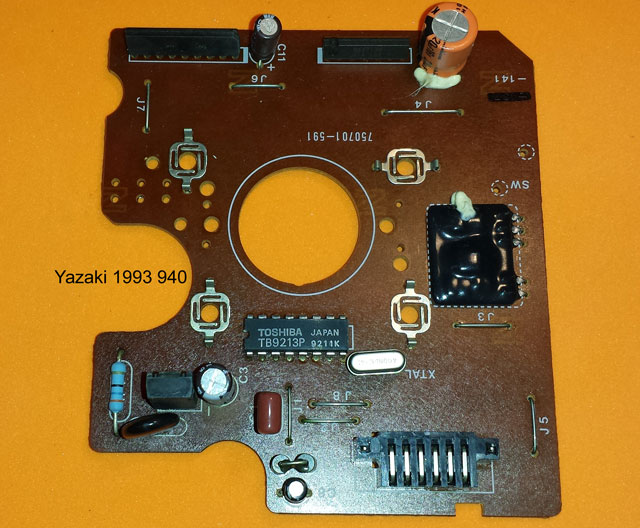
The design is obviously cheaper to build than its predecessor.
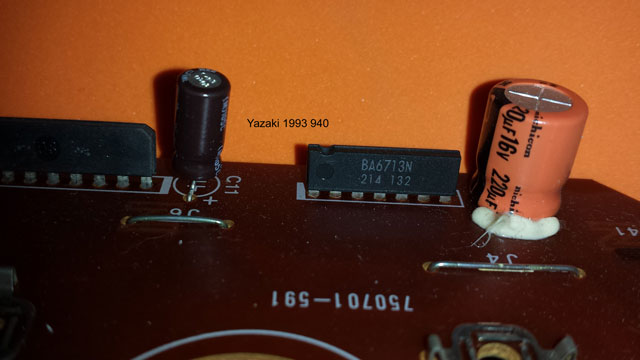

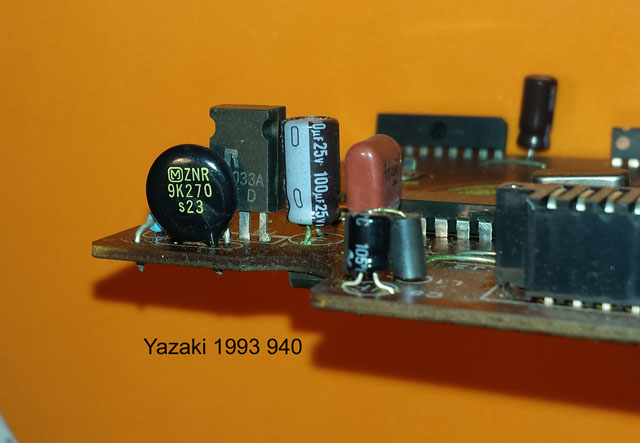
In this shot, the verdigris on the electrolytic capacitor leads and jumper wires offer some evidence of leakage.
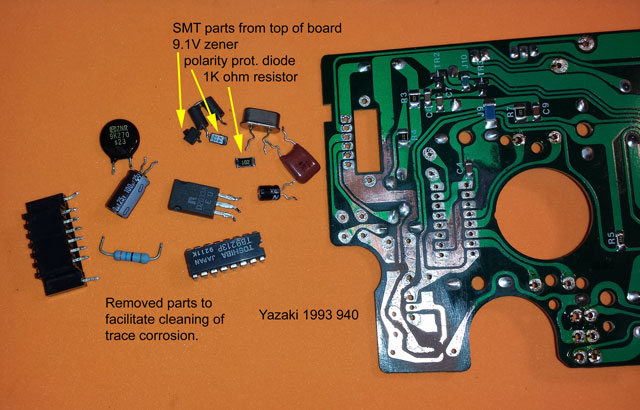

The copper foil is well adhered to the paper based substrate, but eroded considerably. Open circuits are probably the largest part of what needs fixing.
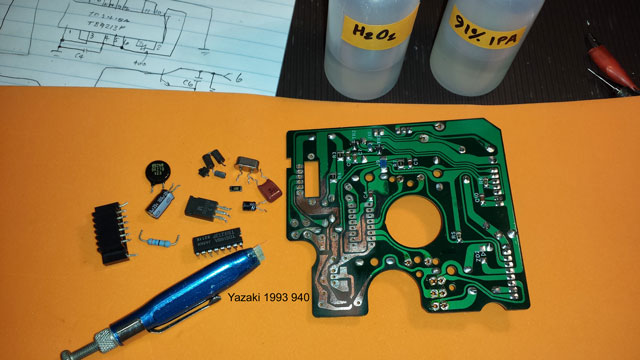
The blue tool is a fiberglass brush used to expose uncontaminated copper for soldering.
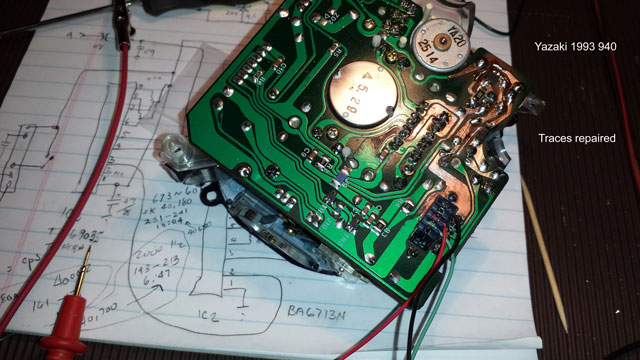
Repaired and tested.

Shows trace repairs
v1.1.1
Return to links index
 In a recent forum post, a photo of a 1993 speedometer showed what appeared to be burn damage to the printed wiring board, and it was reported to be typical of many. The question posed was whether anyone knew what caused it. As I do not own any of these cars, two 7/9 owners sent me damaged units as examples to try to learn from, and have been successful documenting the simpler 240 speedometer. I was able to repair all three units and return them. Here is what I learned from looking at these three examples.
In a recent forum post, a photo of a 1993 speedometer showed what appeared to be burn damage to the printed wiring board, and it was reported to be typical of many. The question posed was whether anyone knew what caused it. As I do not own any of these cars, two 7/9 owners sent me damaged units as examples to try to learn from, and have been successful documenting the simpler 240 speedometer. I was able to repair all three units and return them. Here is what I learned from looking at these three examples.








































